Can You Make Money Blogging Without Amazon Affiliation
There are countless ways to monetise a blog, each with its own merits. We're going to focus on one method which unlocks the opportunity to generate predictable recurring revenue from your blog.
In the same way Netflix run their subscription service and thousands of Patreon creators are generating $12.9million in payouts per month – we're going explore how to transform a blog into a membership business, where your audience support your work with subscriptions.
If you're interested in running an independent, sustainable online business where you have ultimate control, this is the guide you've been waiting for 💪
What is a membership business and how much money can I make?
In this context, we're talking specifically about generating revenue from publishing content. A growing number of creators in a similar position to you are making money from blogs, newsletters, music and videos by offering premium memberships to their audience. Here's some real examples:
- Premium newsletters such as The Dish and Stratechery pull in $millions/year
- Philip DeFranco's daily news show is estimated to make up to $38k/month
- Successful podcast Chapo Trap House generates $158,000 per month
- News publishers like The Information and De Correspondent both generate several $millions annually
- La Vagabonde's sailing YouTube channel brings in an estimated $25k per episode
- Technology newsletter Normcore Tech generated $4,000 in the first 5 months, as a side project
The rest of this article is going to explore how you can do the same thing!
Are memberships the right thing for my blog?
The single most important aspect that will determine the success or failure of your membership publication is unique, quality content. All of the examples above are providing content their readers and fans can't find anywhere else. That's where this business model thrives.
Provided you're already on board with the amount of work that will take - turning your blog into a membership business, or building one from scratch, is absolutely an option for anyone who wants to generate revenue from their content.
"But who would pay for my content?"
Times are changing. We're entering a new era where independent publishers have a unique opportunity. It's no longer the case that you need to appeal to a mass audience to find success online. Niche markets are larger than ever, and can become a surprisingly big business. You only need to look at some of the top creators on Patreon for proof of this.
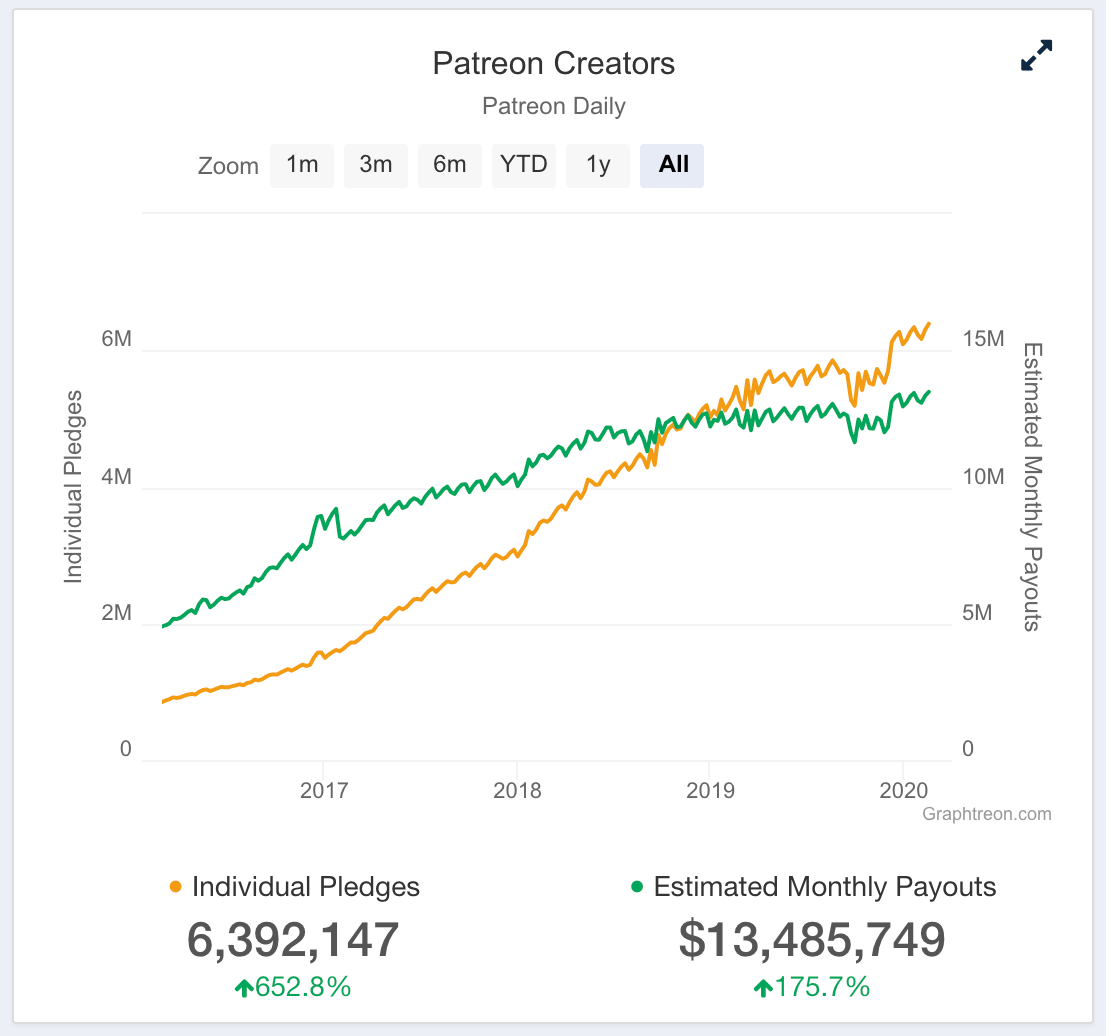
Some quick napkin math helps to illustrate further. With 500 members at $10/mo, you've got annual revenue of $60,000. This doubles to $120,000 when you hit the magical 1,000 true fans.
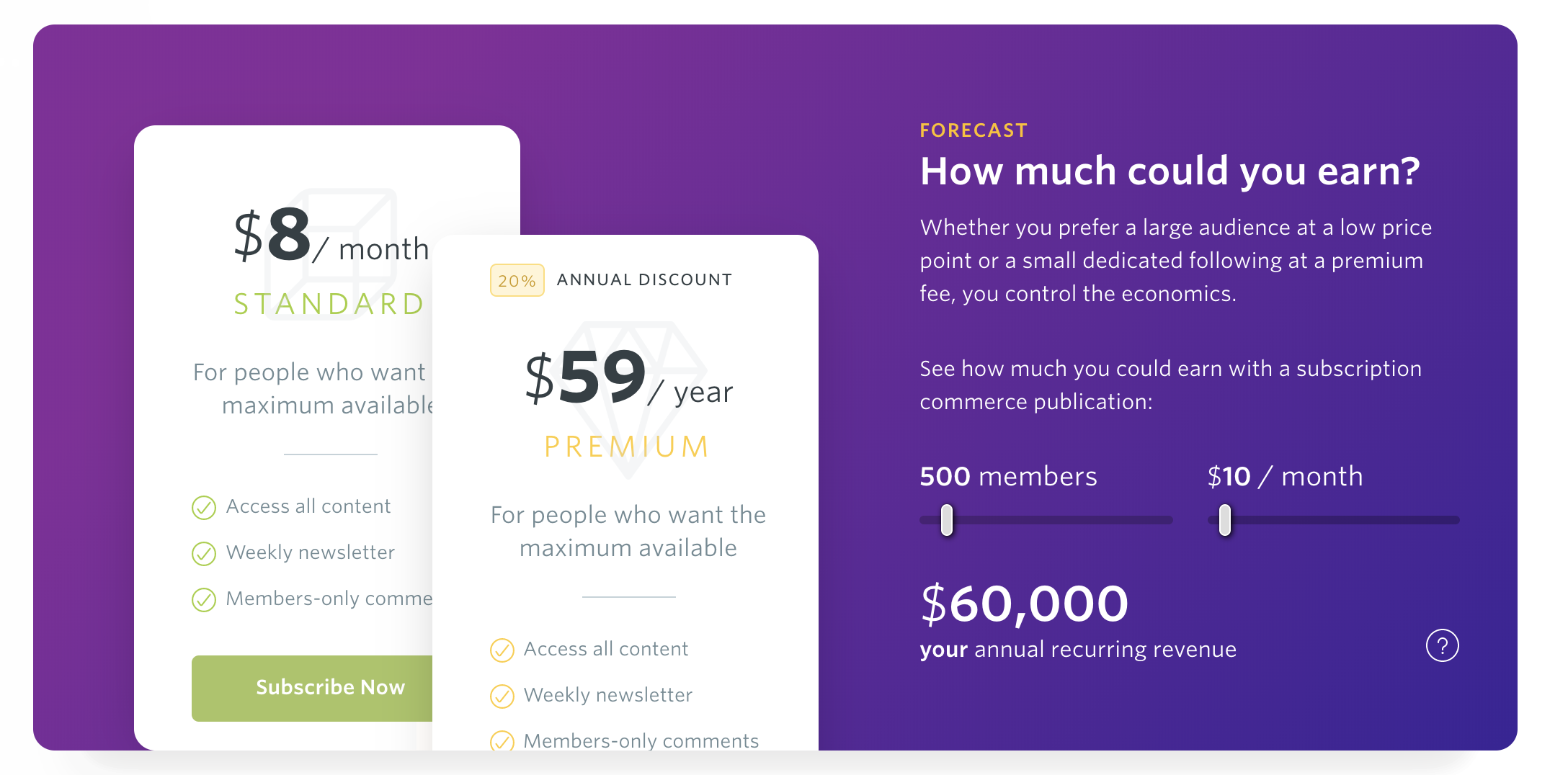
We'll dive into how to tackle pricing later. For now, it's important to know that while you certainly won't make this kind of revenue without putting in a lot of time and dedication - it is possible - and we believe it's the most sustainable and future-proof option there is to make money from a blog.
Affiliates & ads no longer work the way they used to
Social media platforms are saturated, everyone is tired of clickbait and advertising models that rely on large audiences no longer work. Publishers were left to fight for the remaining ad dollars, eventually looking for a better way. Meanwhile, consumers are consistently asking for more privacy causing big platforms like Google to tighten up on third-party tracking.
With advertising, you're forced to rely on others and your audience get no choice in the matter. Advertising is at odds with the principles of creating good content: it requires a broad audience with a smaller, less manageable return.
The sustainable alternative
The membership model is an increasingly popular option for publishers of all kinds, and here's why:
- Your income is stable and entirely predictable
- You control your destiny - you don't need to rely on other brands, ad platforms or any one else
- You don't need a huge audience to be successful
It's a great model for your audience, too:
- They make a choice to sign up
- They get to have a say and provide feedback
- There's an opportunity to form a relationship and build trust
This doesn't mean other models of making money from a blog aren't valid. It's just not our area of expertise, so we're not focussing on that (and we think memberships & subscriptions are a better long-term solution 😉).
How to start a membership business
The hardest part is always getting started. If you have an existing audience in a particular niche then you're already one step ahead, but that doesn't mean you shouldn't do some research to discover more about your potential customers. Similarly, if you're starting from square one, it's time to put your research sweatpants on.
Here's some questions to ask yourself to get started:
- What niche topics or areas of interest are you genuinely an expert in?
- What content can you create in that niche that people can't find anywhere else? How can you add value, or create something new?
- What format suits your content best? Written content, videos, a podcast or some combination?
- Competitive analysis: Who are the top ranking websites in your niche? Are there any existing membership businesses in operation?
- Have you had a real conversation or done some stalking of your potential members? Customer research really helps to identify what people value, what they're looking for and how much they might be willing to pay for it.
Membership blogs can fall into any niche category you can think of, the key point is how you differentiate your content from the rest.
Here's some of the tools we like to use during the research phase:
- AHREFs - Our favourite tool for keyword research, competitor research and a whole lot more
- Google Trends - Find out how your niche is trending over time
- Reddit, Quora, Forums - all great places to lurk and find out what people are talking about in particular niches
- SimilarWeb - Enter any website to discover how it performs, from traffic to engagement
Make sure you have an idea of what your niche is, how you're going to set yourself apart from the rest, who your ideal customers are and finally, who your competition are. Write it all down somewhere.
Tools for creating a membership website
To run this type of business, you'll need a subscription commerce platform. It used to be quite complicated to set up a publication with subscriptions, but more recently companies (like ours) have built the tools required to make the process much easier.
Ghost allows you to create a truly independent membership business, and unlike many other platforms, we never take a percentage of your revenue. Everything you earn is yours to keep.
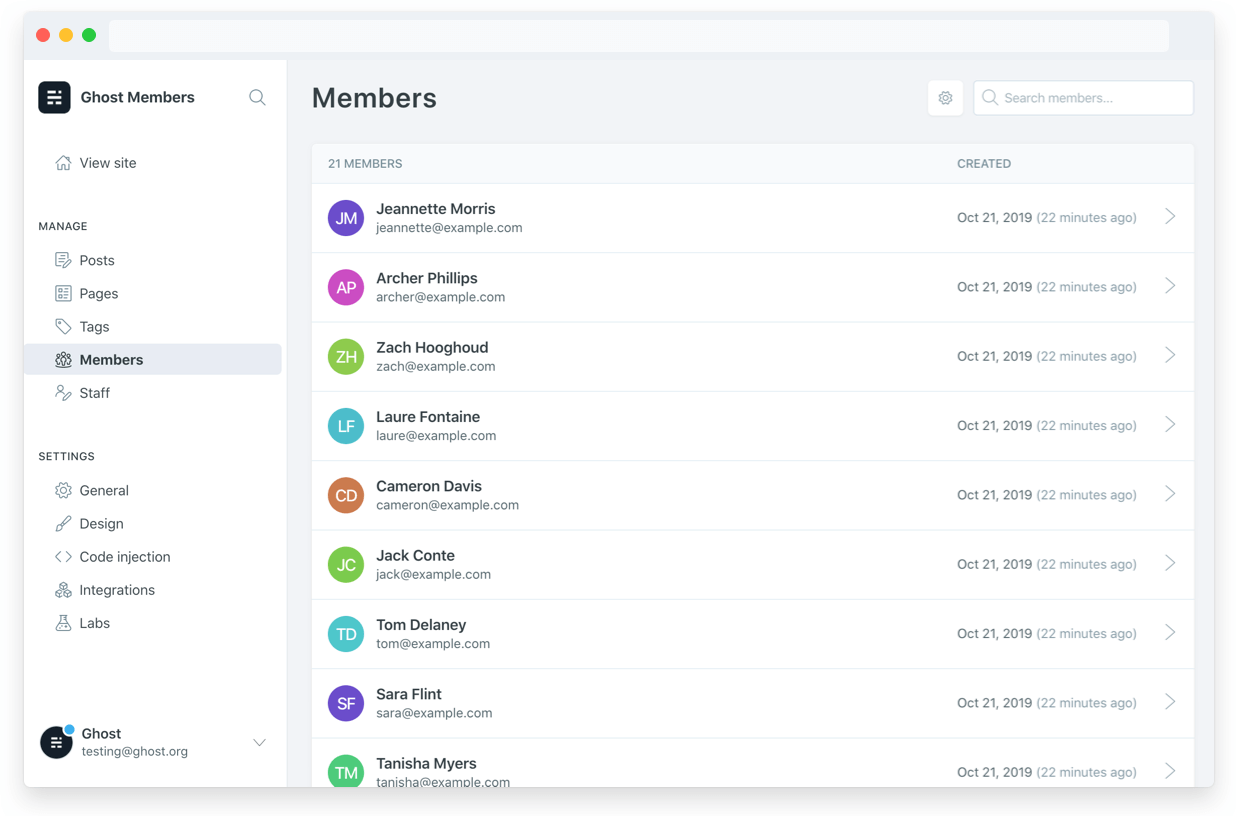
Ghost is open source and extremely flexible - meaning you always own the keys to your blogging business, and it won't suddenly disappear if the platform does. It also means you can create entirely custom publications like Rediverge and Publisher Weekly.
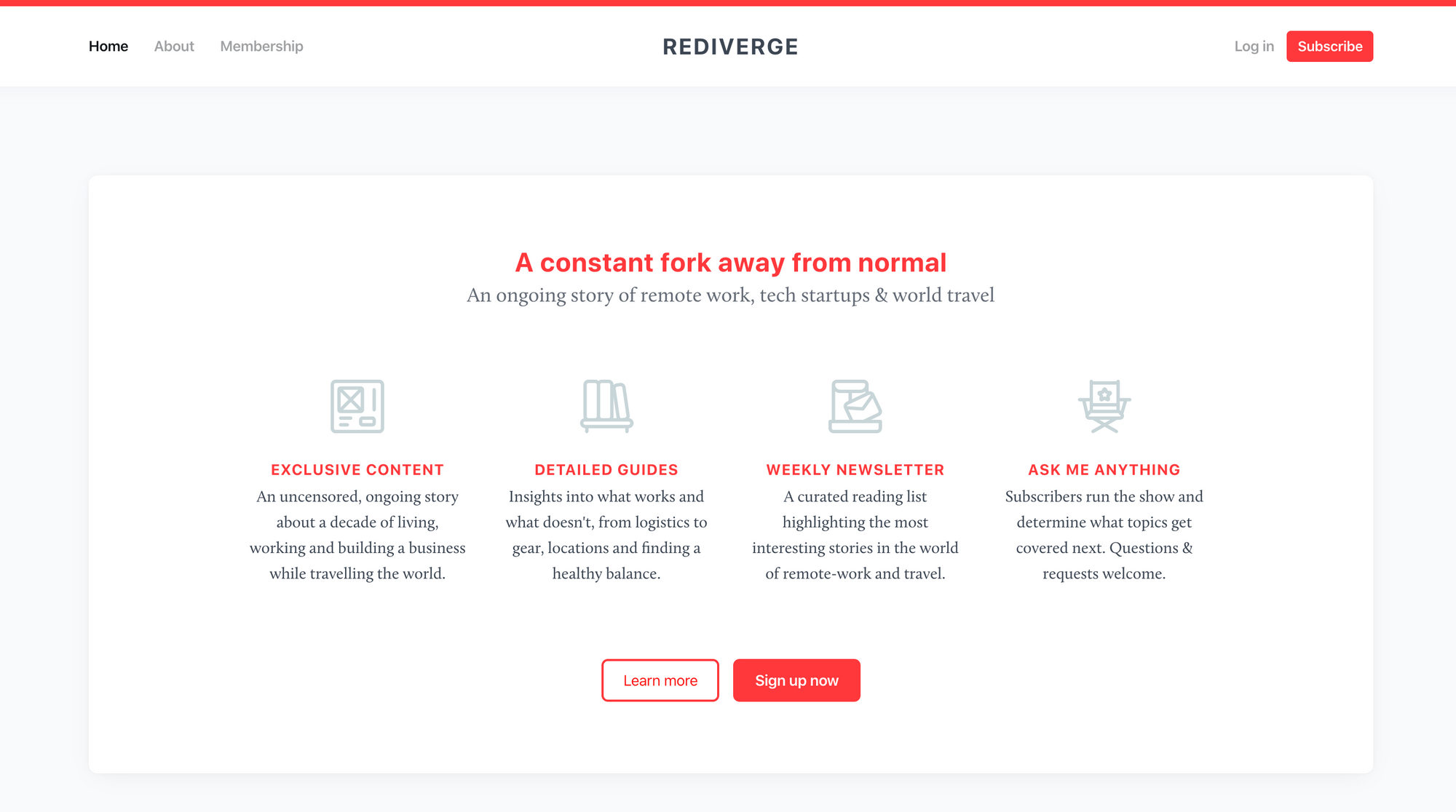
There are other platforms you can choose from including: Patreon, Substack and WordPress plugins like Memberful.
If you want to learn more about Ghost vs other platforms, you can check out our handy comparisons. Ultimately - the choice is yours. So be sure to do some research and figure out what suits your business. Once you've done that, take the first leap to get your membership website created.
Get started in a few hours or less with Ghost by signing up for a free trial and using our members guide!
How much to charge: Pricing strategies
Software companies like ours have been using recurring subscriptions as a model for many years. We've made some mistakes, had plenty of successes and learnt a thing or two 😅. Ultimately pricing is important and in order to get it "right" - you have to experiment.
There's no one-size-fits-all set of advice, since pricing strategies can vary depending on your market or niche, on who you customers are and lots of other factors. However, one word of advice is that most creators tend to undervalue their work, which can lead to economically unsustainable business models or even failure. Patreon actively discourage their users from setting pricing below $5/mo for this very reason.
So here's some questions & ideas to help you get started with your first pricing experiment:
- Think about how much value your content truly has for your members
- Speak to would-be members and your existing audience if you have one
- Figure out what your ambitions are! How many members do you actually want? How much do you want to earn? Use the calculator on our members page.
- Find out what your competitors are charging - or look at similar niches
- Consider using early adopter pricing when you get started with a view to increasing it as your product evolves (this is a great way to test pricing on an ongoing basis)
This report suggests that the majority of membership businesses charge somewhere between $25-49 per month, and B2B membership businesses are more likely to price over $50 than B2C businesses.
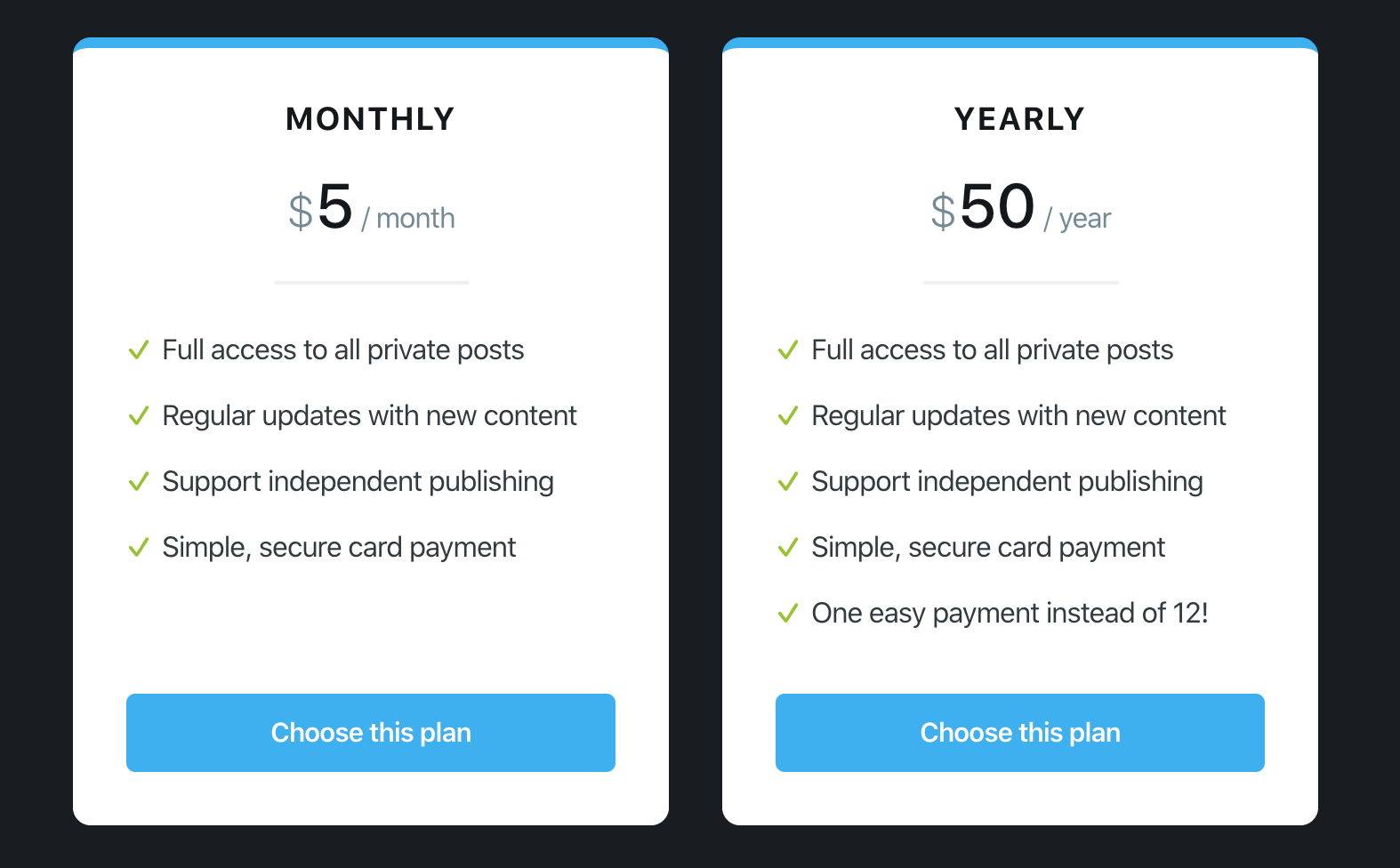
Deciding how to price your membership content is important. But it can also be adjusted and tested in the future. So spend some time on this now, and then understand that it will be an ongoing thing to experiment with as you grow.
Invite your existing audience or fans
If you're already blogging in your niche, or if you have a relevant email list from another project – a great way to get your first customers is to invite everyone who is already familiar with your work. They become your early adopters. If you don't have an existing audience yet, don't panic – skip to the next section.
Invite everyone on your email subscriber list to join your new membership website by sending them an email, or consider importing some of your biggest fans to your membership site so they have immediate access to free content and can help promote you by word of mouth.
In Ghost you can import any list from other tools such as Mailchimp, Substack or Patreon – and you can even import paid members if you have existing supporters on other platforms.

Working with content access-levels
Running any kind of independent business means having to wear several hats and a membership business is no exception. The good news is that having premium content gives you the opportunity to adopt a number of strategies to promote your work to a new audience. Firstly, you can decide whether some or all of your content will exist behind a member log in screen.
- Teaser content – Add an excerpt of your writing, podcast or video to attract interest, and unlock the full content for premium members only
- Free content – Publish some of your content publicly to use across your marketing efforts
As with pricing, you can always experiment with this to find out what works best. For example, Business Insider manage free vs paid content by assuming that not all content is created equal, and only placing the most exclusive or unique stuff behind a subscription.
Attracting new members
Once you've got an idea of the access-level your content will have, you can utilise well-known strategies to get people to discover your work:
- Email – build an audience of free subscribers and get them into your marketing funnel, then use email to convert some of those free subscribers to paid subscribers.
- SEO – Optimise some of your public content for relevant keywords to attract free traffic to your membership content.
- Ads – See, we don't totally hate on ads. Facebook can be a great place to reach a targeted niche audience with promoted posts, at a relatively low cost.
- Communities – Reach out to relevant communities about your content, maybe offer an incentive, but be careful not to self-promote too much in communities you're not already an active member of.
- Partnerships – Partner with brands or businesses and provide each other with some reciprocal promotion, backlinks or sponsorships.
Ghost has easy to use access-levels for public, free and paid content, as well as native email newsletters and a full library of integrations. This means you can implement any of these marketing strategies in any combination, without any additional plugins or downloads. Here's an example of what "teaser content" looks like on a Ghost publication:
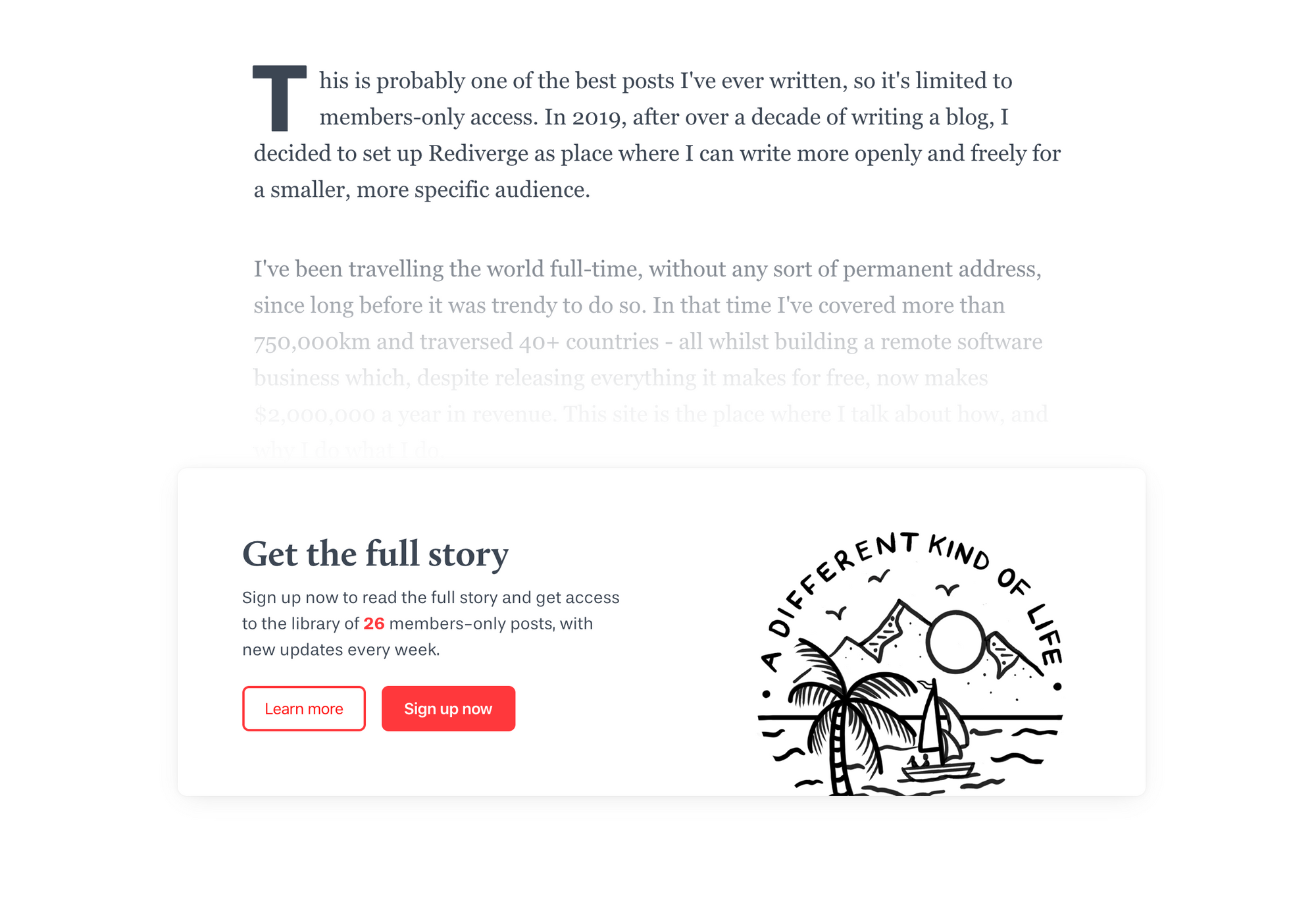
We could write an entirely separate post about each of these and more - subscribe to our newsletter to find out when new posts are available.
The membership lifecycle
We've now covered what a membership business looks like and explained how it can help you to make money from a blog. We've also taken a look at how to get started, from the initial research to setting up a website and finding your first subscribers. What comes next?

You can think of this process as a cycle. You add unique content at the top, which attracts a loyal audience. Eventually they realise they can't live without your unique content and sign up.
The next step is to build relationships, form trust, and reduce what's known in the subscription world as "churn". Keeping your paid members around for as long as possible is one of the most cost effective ways to run a membership business. But this post is long enough, so we'll cover that separately.
In the meantime, spend some time using the tips in this article to get started. That's the first outcome to success.
There are many strategies to grow a successful online business, but the first step is to get the wheel spinning. The great thing about this method of making money from your online work is that it can suit almost any type of creator or publisher, at any scale.
Whether it's something you want to do on the side as a hobby to generate some extra money, or perhaps your ambition to become the CEO of a startup like The Information or Stratechery. This model is completely sustainable, and provided you bring the quality content, there are no limitations on how far you can take this, or how much money you can generate.
Can You Make Money Blogging Without Amazon Affiliation
Source: https://ghost.org/resources/how-to-make-money-blogging/
Posted by: sharpmeir1944.blogspot.com

0 Response to "Can You Make Money Blogging Without Amazon Affiliation"
Post a Comment